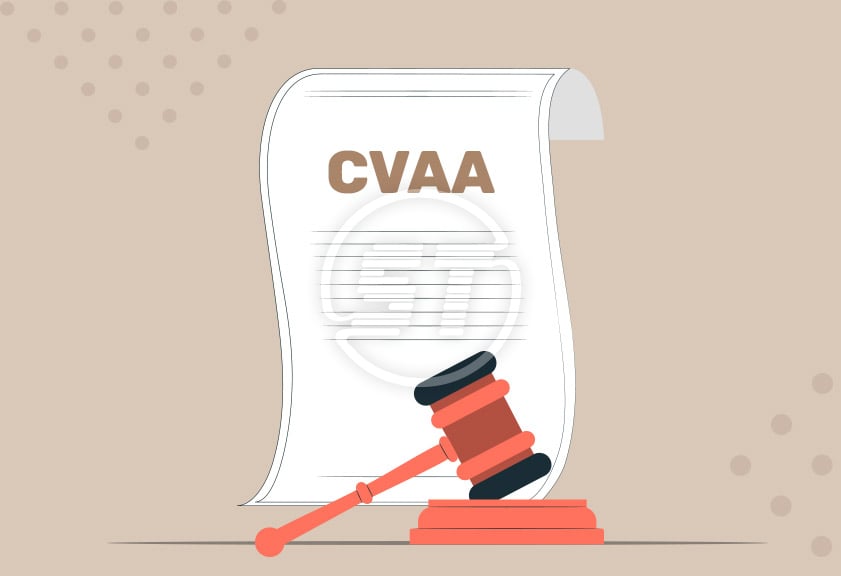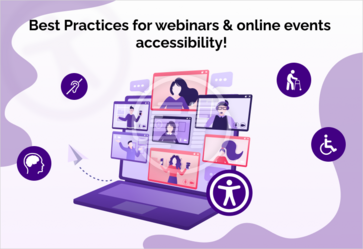CVAA or The Twenty-First Century Communication and Video Accessibility Act is live since 1990. It came into existence with the Americans with Disabilities Act (ADA); however, it became law in 2010. It made a profound impact in the field of communication services and made these advancements accessible to millions of people with disabilities in the US.
This act ensures that people with any sort of disabilities will get equal access to advanced communications like digital, broadband, and mobile products and services. CVAA requirements specify how to make technology accessible for everyone.
Let’s know more about CVAA and its role in digital accessibility.
What is CVAA compliance?
The CVAA is the section of the accessibility act that is responsible for modern communications accessibility for people with disabilities. It is an extension of ADA and section 508 named as Title I, and II.
Title I of CVAA imposes high accessibility standards on modern telecommunication services and title II focuses on video programming accessibility. The Communication and Video Accessibility Act affects organizations that provide video programming, though it has a few restriction exemptions. For example, it doesn’t cover YouTube videos.
CVAA also keeps an eye on producers, developers (software, hardware, user interface layer, or an application) for advanced communication services and service providers.
Advanced communications services include
Voice over internet protocol interconnected services, which enable two-way communication in real-time and require a broadband connection.
Non-interconnected VOIP services real-time voice communication using internet protocol.
Electronic messaging services that provide messages in textual non-voice format in real-time or near real-time.
Interoperable video conferencing services that offer video and audio communications in real-time and enable users to share desired information.
What is the need for advanced communications accessibility?
The modern era is all about technology, be it interacting with a company’s website, communicating by video, or using a smartphone to check the news. Many people with disabilities do not even try these options due to their inaccessibility.
There are umpteen hurdles available and that is the reason disabled users try to avoid using advanced communications. Therefore, the barriers from technology ought to be removed so that people with disabilities can seamlessly engage with products and services.
CVAA accessibility requirements for removing barriers
Title I of CVAA recommends, that any provider of technology must ensure the technology is accessible if it uses the internet, whether it is a product or service. And the third-party assistive technology must get supported by the product or service. Moreover, it is prohibited to add features or functions to the products or services if they make them difficult to understand for people with disabilities.
Section 716 of CVAA asks to provide accessible communication devices, their software, applications, etc. with hearing aid compatibility for deaf or users with hearing issues. To meet these requirements of CVAA, while redesigning or updating the software the accessibility standards must get followed.
According to the dissemination of emergency information, the CVAA requires to convey every detail including emergency information in an accessible way to people with disabilities.
The Federal Communications Commission recommends if a company is offering any product or service that relies on assistive technology, then they must involve people with disabilities in the assessment process. They are the right people to judge if a barrier is being removed or not.
Removing barriers from videos
Videos are the most current way of communicating and information gathering. It is a component of virtual business meetings, education, marketing, entertainment, socializing, etc. Thus, if videos are not accessible, how everybody can benefit from the information?
CVAA title II says, all streaming videos must incorporate accessibility requirements. Thus, every video (new or old) should have closed captioning. Closed captioning is the visual display of dialogue, narrations, and other relevant sounds, which are essential to understand the video. It is important for users who have hearing loss. And they are also useful if people are playing the videos in a noisy environment or a quiet space where they use captioning to see the video.
Another barrier can be the lack of video descriptions for the users who are blind. Video descriptions are the audio narration of the visual component of the videos. So, whenever a pause comes in between, the audio narration or voiceover gives the description of the video. The Communication and Video Accessibility Act mandates that internet access via mobile web browsers must be granted to visually impaired or blind users.
ADA continues to protect the rights of people with disabilities where CVAA does not get applied. Because ADA does not endorse any kind of discrimination against users and as mentioned above CVAA is not applicable to some of the videos on the internet.
Wrapping up
It is time to eliminate all the technological barriers and make them completely accessible. Organizations that are moving towards removing technological barriers are more likely to be in a beneficial position. Not only they will follow all the ADA and CVAA laws, but they will also be serving a wider range of audiences.
If an organization is a public entity and fails to these laws, it is subject to legal action. CVAA and other accessibility guidelines are achievable, they just need a little focus. To avoid such problems contact us at hello@skynettechnologies.com or fill out the form below because we can help you to unleash potential growth with ADA website accessibility.


